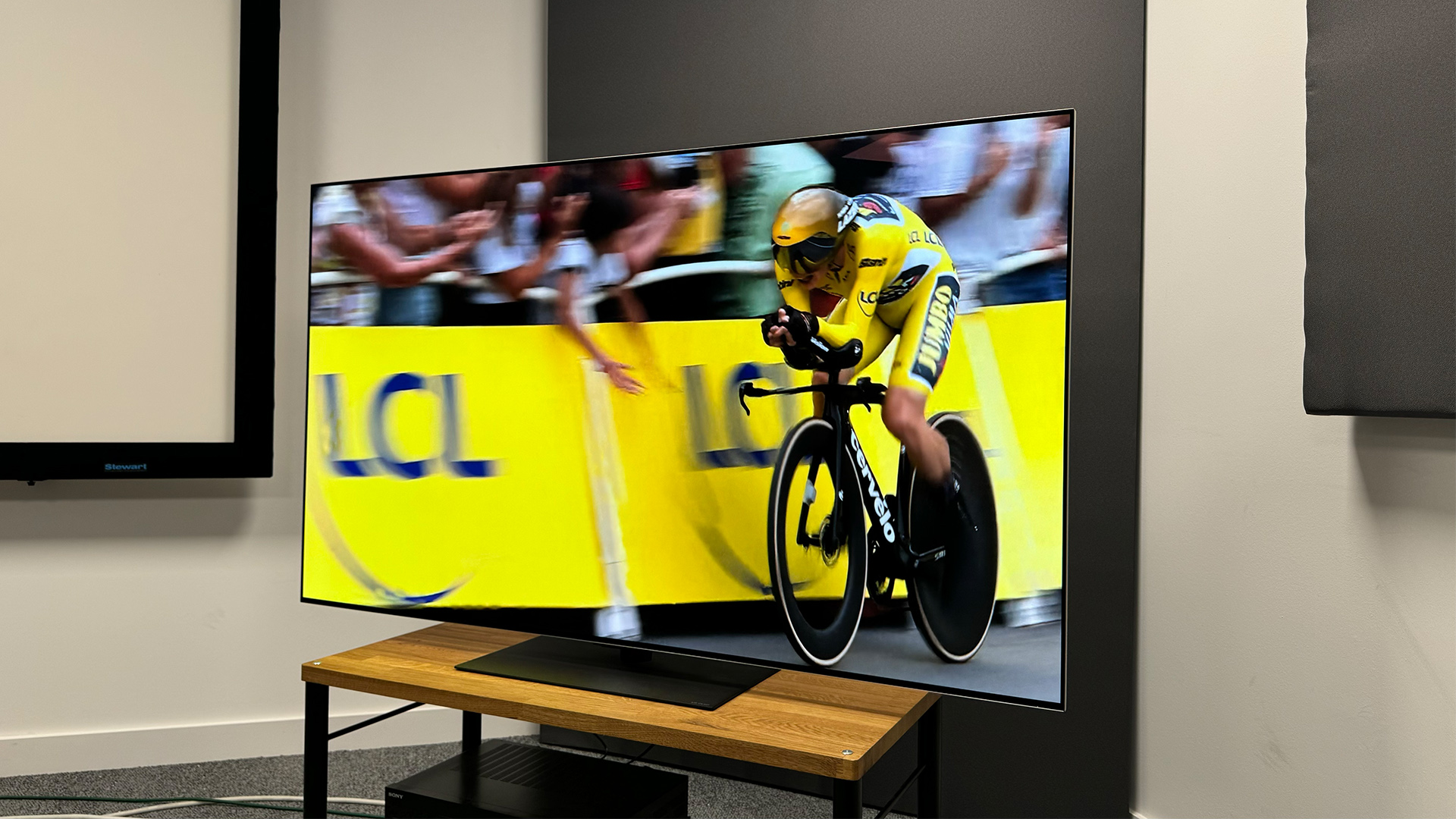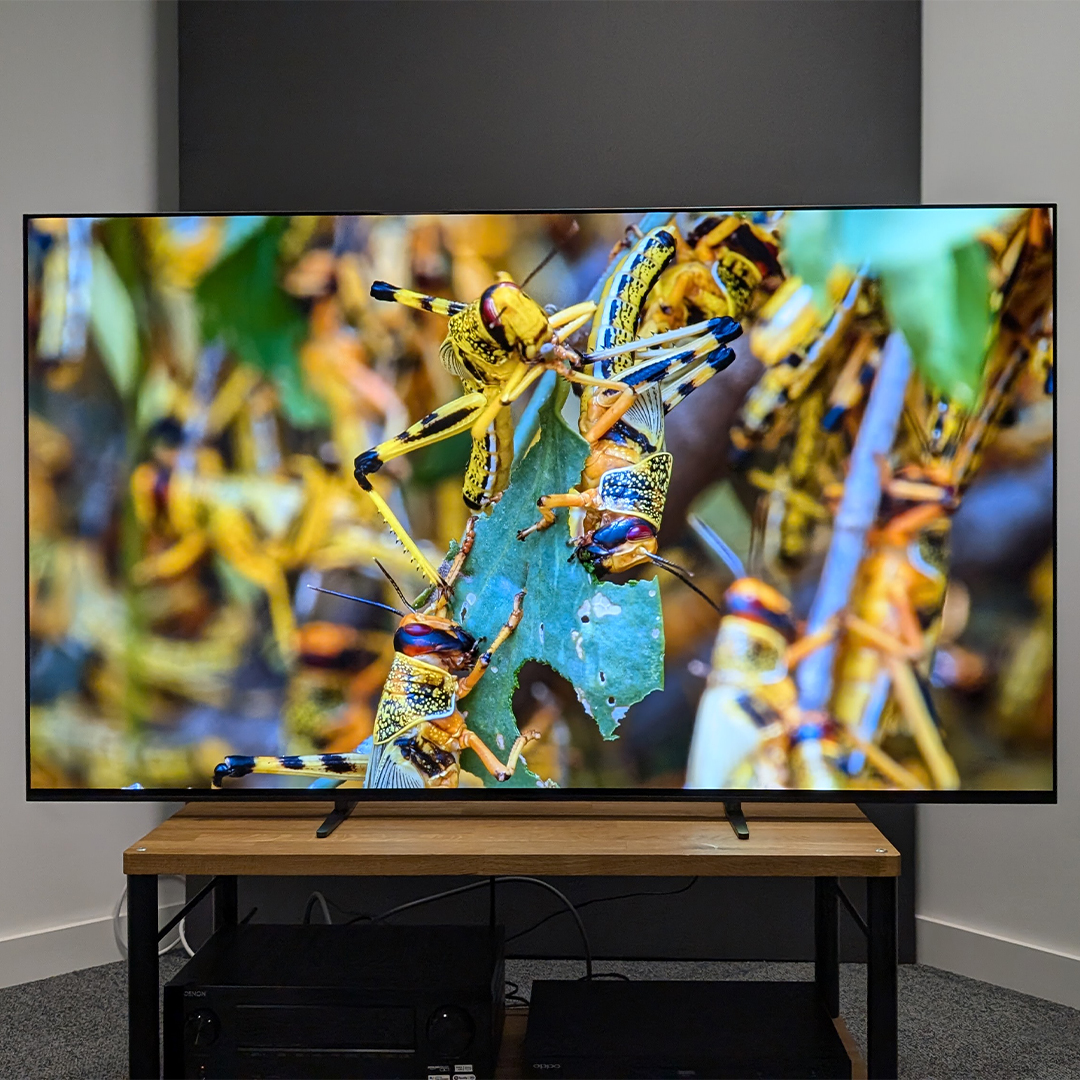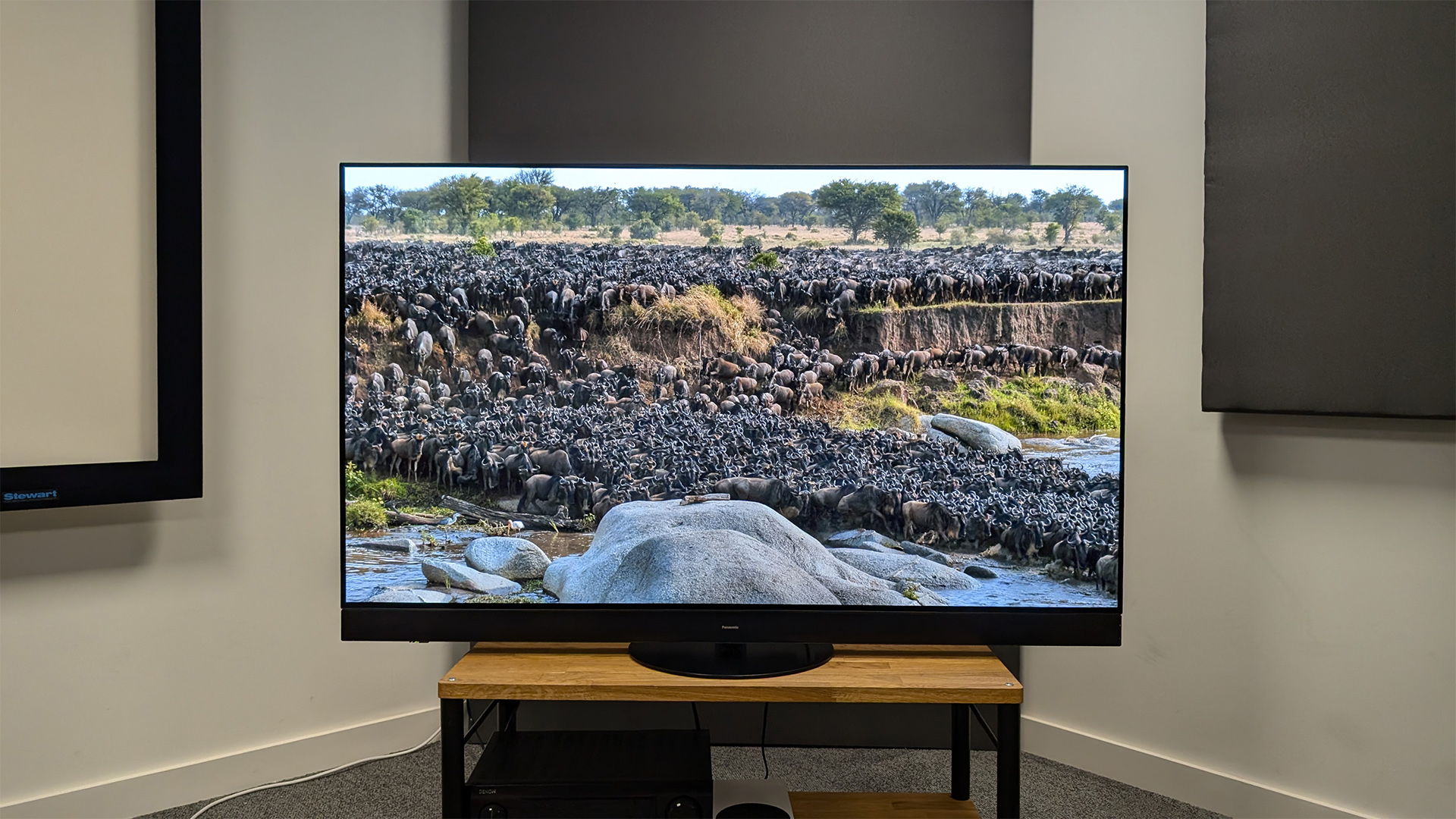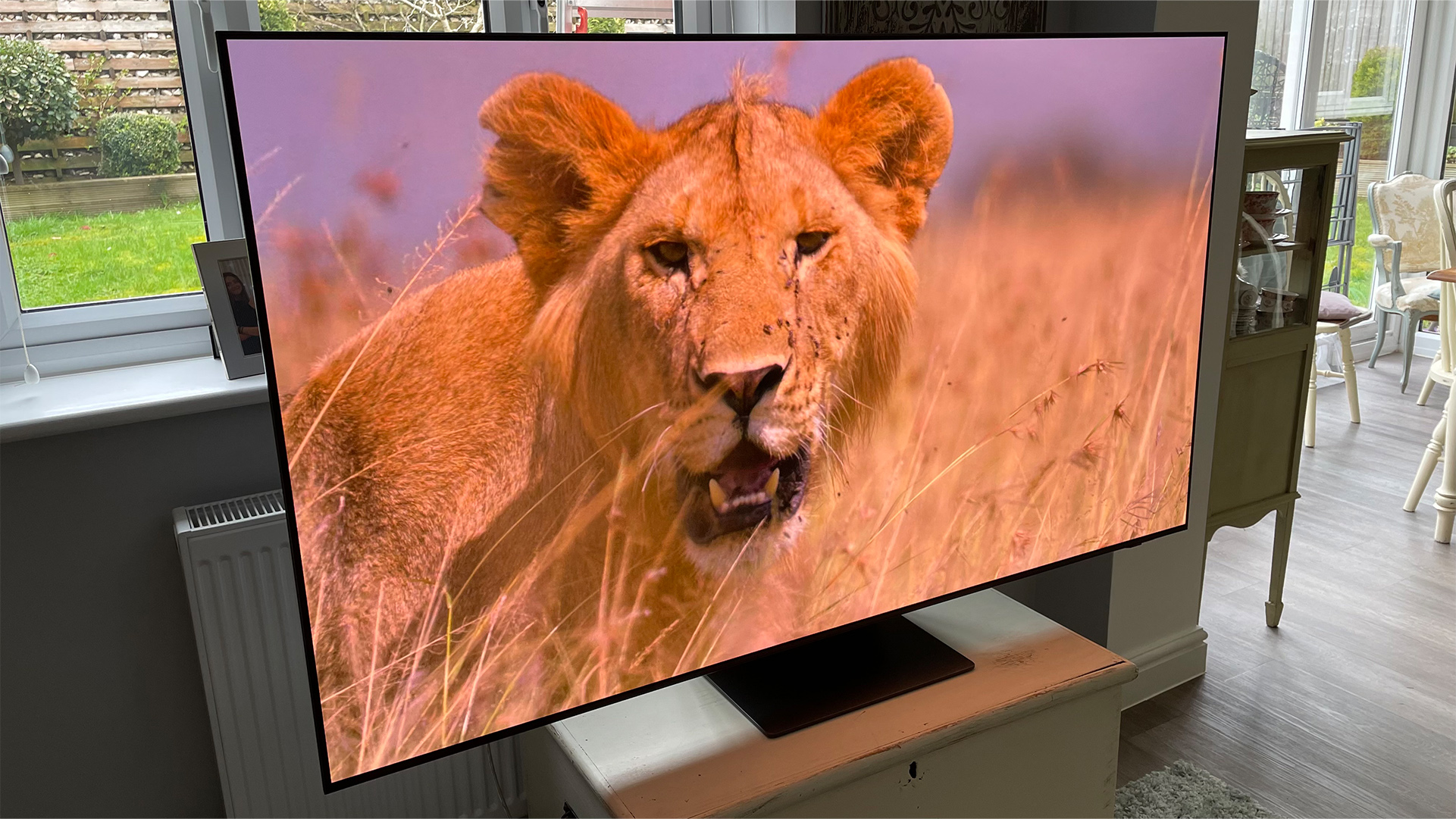WRGB OLED vs Quantum Dot OLED: what are the differences and which is better?
An A-Z on all things OLED

While OLED technology has existed since the 1960s, the first practical OLED display wasn’t built until 1987. Not that you could buy it of course, but over the last twenty years improvements in the manufacturing processes have made mass-production a reality.
In that time we’ve gone from 15-inch OLED TVs that cost a fortune to affordable models that support 4K (and sometimes even 8K), High Dynamic Range (HDR) and High Frame Rate (HFR). Nowadays, every major TV brand offers OLED TVs, although recently you may have read about two different types: WRGB (W) OLED and Quantum Dot (QD) OLED. So how do these panel technologies differ and which is better?
Read on to learn everything you need to know about WRGB and QD OLED TVs.
What is OLED?
Let’s start with an obvious question: what is an OLED? It stands for Organic Light-Emitting Diode, but that probably doesn’t help much. In simpler terms, a diode is a component that conducts electricity, and when it passes a charge through an organic compound in the panel it emits light.
In this case, the organic compound is a carbon-based material, but what’s important is that it glows when electrified, making an OLED panel self-emissive. This is one of the major differences between OLED and LCD, with the latter using a backlight (CCFL or LED) for illumination. This means the light literally passes through the LCD panel, which is why it struggles with deep blacks.
Since an OLED is self-emissive, it can just switch off the current to a pixel and stop it from glowing, which explains OLED’s legendary black levels. LCD TVs try to emulate this using an LED backlight with dimmable zones, but even a Mini LED TV with thousands of zones can’t compete with an OLED TV because all eight million pixels effectively act like independent dimming zones.

In addition, an LCD TV is composed of up to six layers with a backlight, glass substrates containing a liquid crystal layer and polarising filters. In comparison an OLED sandwiches an organic layer composed of a matrix of pixels between a thin-film transistor for providing the electrical current and a glass front with a polarising filter. This is why OLED TVs are so thin.
There are other benefits as well, such as the ability to deliver wider colour gamuts, with most capable of hitting 100 per cent of DCI-P3, and very bright specular highlights at a pixel-level of precision. This expands an OLED TV’s already impressive contrast performance, and when combined with effective tone mapping can produce HDR that accurately reflects the original artistic intent.
While it’s true that an OLED TV can’t hit the peak brightness of some LCD TVs, the best OLED TVs are now reaching nearly 2000 nits, which is still very bright. In combination with its superior contrast performance, pixel-level precision and effective tone mapping, HDR looks fantastic. Better still, the wider viewing angle of OLED means it looks great from anywhere in the room.
The only area where an OLED struggles with HDR is reproducing a bright overall image – a snowy landscape, for example – because energising the entire panel is difficult. At this point, the TV’s automatic brightness limiter kicks in, and a full-field white pattern won’t reach more than about 350 nits.
Much like another self-emissive display technology – plasma – an OLED screen can also suffer from image retention and even screen burn. This was more of an issue with early OLED TVs, and in recent years manufacturers have introduced features to successfully mitigate this problem.
- Our expert pick of the best OLED TVs you can buy
What is WRGB OLED?

While most major TV brands offer OLED TVs, until recently all the panels came from one source: LG Display. This is a separate subsidiary to LG Electronics, which makes the brand’s OLED TVs, so it can sell panels to anyone. As a result, LG has dominated the OLED market for the last decade.
LG’s panels use an approach called WRGB OLED (often shortened to W-OLED or WOLED), which stands for White, Red, Green and Blue. This design uses a compound that produces white light and then applies colour filters to create red, green and blue sub-pixels. This approach bypasses a problem where the organic compound used to create the colour blue decays faster than those for red and green. In addition, LG has added a fourth sub-pixel for white, which helps increase the overall brightness of the OLED panel. As a result, each pixel is composed of white, red, green and blue sub-pixels – hence WRGB OLED.
In recent years, LG has refined its WRGB design by adding thousands of microscopic lenses to each pixel in an OLED panel. This is called a Micro Lens Array (MLA) OLED, and the addition of these microscopic lenses helps direct the light emitted by each pixel in a more focused fashion. This not only improves the efficiency of a WRGB OLED, boosting the peak brightness towards 2000 nits on specular highlights, but does so without needing to drive the panel harder, and thus reduces the risk of permanent screen burn.
What is Quantum Dot (QD) OLED?

Although LG has largely had the OLED market to itself over the last decade, WRGB OLED isn’t the only game in town. The first commercially available OLED TVs used an RGB design where each pixel is composed of red, green and blue OLED. While images produced by this approach were excellent, the faster decay of the organic material producing blue light remained an issue.
Samsung’s first, and until recently only OLED TV used an RGB design, but the company decided it was unviable commercially and pulled out of the market. Sony continued to manufacture its own RGB OLED panels, but only for use in super-expensive professional-grade monitors for studios.
However, in 2022 Samsung Display launched its new Quantum Dot (or QD-OLED) panels, with Samsung Electronics and Sony offering TVs that use this technology. A QD-OLED panel employs multiple layers of blue OLED material to get around the decay issue, and then creates each pixel by combining three sub-pixels: a blue sub-pixel consisting of the original blue light, along with red and green sub-pixels created with quantum dot filters.
Since this approach doesn’t use a regular colour filter and the quantum dots are more efficient, the result is an image with a wider colour gamut and impressively bright peak highlights. In fact, Samsung claims QD-OLED TVs can deliver 80 per cent of BT.2020 and 2000 nits of peak brightness
WRGB or QD OLED: which is better?
So, which is better: a WRGB OLED with MLA or a QD-OLED TV? In terms of peak luminance, there really isn’t a huge difference, although QD OLED does deliver slightly more brightness. In testing, the LG G4 (pictured top), which uses WRGB with MLA, delivered a fairly bright 1500 nits on a 10 per cent window and 220 nits on a 100 per cent window. However, the Samsung S95D (pictured above), which employs a QD-OLED panel, managed an even more impressive 1700 nits on a 10 per cent window and 360 nits on a 100 per cent window.
A bigger difference lies in the native colour gamuts of these two technologies. In testing, the LG G4 covers 98 per cent of DCI-P3 (or 74 per cent of BT.2020), whereas the Samsung S95D goes much wider, not only covering 100 per cent of DCI-P3 but also a massive 89 per cent of BT.2020. Outside of a few video games, there’s little content using a colour gamut as wide as BT.2020, but it’s good to know your new OLED TV offers a degree of future-proofing. Also, with its brighter image and wider colour gamut, QD-OLED is definitely the clear winner in terms of the overall native colour volume.
Of course, there’s more to picture quality than just the inherent capabilities of the OLED panel being used, with image processing, motion handling and tone mapping all playing their part. Ultimately you need to decide which OLED TV is best for you, so whilst we certainly recommend you read all the relevant TV reviews here at What Hi-Fi?, it’s also important you demo any TV you’re thinking of buying. One thing is for sure, whether you choose WRGB or QD OLED, your new TV will deliver a picture that’ll knock your socks off.
MORE:
MLA vs QD-OLED: which TV tech is better?
The best TVs you can buy, from affordable flatscreens to flagship OLEDs
LG C5 preview: release date and price predictions, and 5 improvements we want to see from LG's 2025 mid-tier OLED
Samsung S95E preview: release date rumours, price predictions and what we want to see from Samsung's 2025 QD-OLED
Get the What Hi-Fi? Newsletter
The latest hi-fi, home cinema and tech news, reviews, buying advice and deals, direct to your inbox.
